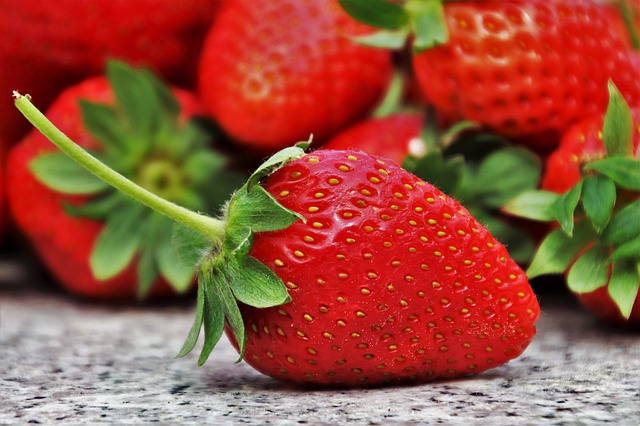You are what you eat and drink. We’ve all heard that saying, but do we really know what’s in our food and drink? They may be genetically modified or contain pesticide residues, antibiotics or chemicals from food packaging, etc. Also, sometimes what’s on the label doesn’t list the actual food it contains.(1)
It’s important to understand how food is grown and animals are reared as it affects both nutrient content and hormone/pesticide levels. Eating organic when possible reduces our exposure to toxins. It’s a personal decision on whether to buy organic and everyone has their own criteria including budget and availability. I chose to buy organic the foods that we eat in large quantities. Children eat and drink more pound for pound than adults and their diets are limited to a few foods. As a result they may be exposed to more contaminants than we are.
In a study that compared the difference between conventional foods and organic foods found that preschool children who had conventional foods had more exposure to organophosphorous (OP) pesticides (2). The research deduced that consumption of organic produce appeared to provide a relatively simple way for parents to reduce their children’s exposure to these pesticides. And in a separate study having organic foods significantly lowered the children’s exposure to OP pesticides (3). It was therefore intuitive to assume that children whose diets consisted of organic food items would have a lower probability of neurologic health risks, a common toxicologic mechanism of the OP pesticide class.
When buying dairy, meat or eggs I get organic to decrease the effects of antibiotics and hormones.
When buying organic it is useful to know what the labels mean. Here’s a brief summary (source: USDA)
The meaning of organic:
Produce can be called organic if it’s certified to have been grown on soil that hasn’t been treated with synthetic fertilizers or sewage sludge. The crops cannot be genetically modified or irradiated.
Organic meat regulations require that animals must be fed with only organically grown feed (without animal by-products) and animals cannot be treated with synthetic hormones or antibiotics. The animals must have access to the outdoors, and ruminants (hoofed animals) must have access to pasture. Animals cannot be cloned or genetically modified.
Understanding Organic Labels:
- 100% Organic – Foods that are completely organic or made with 100% organic ingredients may display the USDA seal.
- Organic – Foods that contain at least 95% organic ingredients may display the USDA seal.
- Made with organic ingredients – Foods that contain at least 70% organic ingredients will not display the USDA seal but may list specific organic ingredients on the front of the package
- Contains organic ingredients – Foods that contain less than 70% organic ingredients will not display the USDA seal but may list specific organic ingredients on the package.
Safe Produce Guide
The Environmental Working Group publishes many useful guides including the “Safe Produce Guide” which lists the Dirty Dozen. These are the 12 Most Contaminated Fruits and Vegetables which include apples, celery, tomatoes, cherries, grapes, nectarines, peaches, spinach and strawberries.
Clean Fifteen: 15 Least Contaminated Fruits and Vegetables which you don’t have to buy organic. These include asparagus, avocados, sweet corn, mangos, onions, papayas and pineapples.
You can CLICK HERE to see this guide to select the foods that you want to buy organic.
Preparing Your Food
It’s important to wash your produce to get rid of any residues. We all know we need to be careful when handling meat and fish, however produce can also cause food borne illnesses. This is because it could be contaminated by animals, poor hygiene among workers and harmful substances in soil and water.
Always wash your hands with soap before cleaning the produce. To wash your produce you can use a homemade wash using 1 tablespoon of apple cider vinegar or white vinegar with 2 cups of warm water. Fill a large bowl or the sink with this and let the produce soak for 5 minutes, then clean and rinse with water. Soaking should not be done for very soft skinned fruits like berries and peaches. For foods with a tougher skin you can use a vegetable brush, e.g. carrots and potatoes. Some produce has an inedible skin, this should still be washed as you don’t know what it’s been in contact with and it will be touching your chopping boards and knives! Dry the produce before storing it.
Washing green leafy vegetables (like baby spinach, kale or rocket leaves) can be difficult as they are delicate. I would recommend buying these organic.
References:
(1) BBC News Horsemeat Scandal
(2) Cynthia L Curl, Richard A Fenske, and Kai Elgethun Organophosphorus pesticide exposure of urban and suburban preschool children with organic and conventional diets. Environ Health Perspect. 2003 Mar; 111(3): 377–382.
(3) Chensheng Lu, Kathryn Toepel, Rene Irish, Richard A. Fenske, Dana B. Barr,and Roberto Bravo. Organic Diets Significantly Lower Children’s Dietary Exposure to Organophosphorous Pesticides 2006 Feb; 114(2): 260–263.
